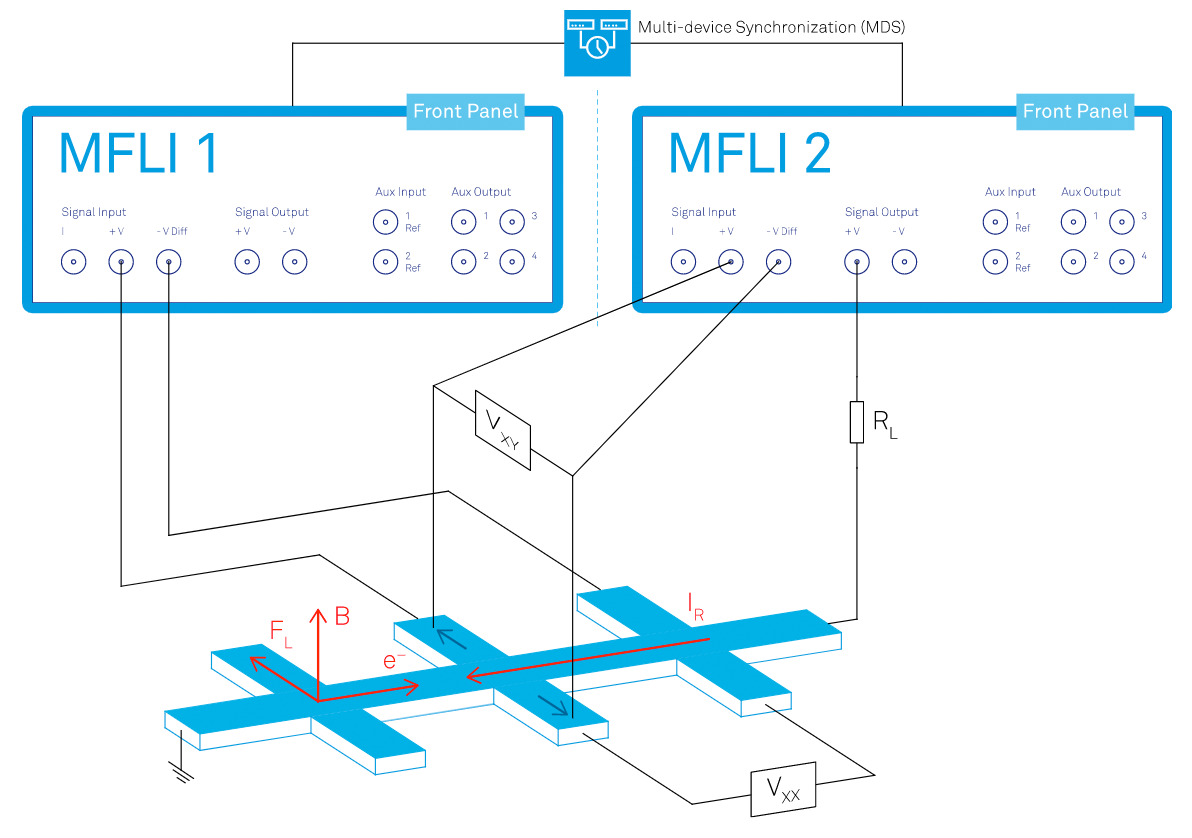Application Description
The Hall effect appears as the potential difference induced perpendicularly to the moving charge carriers and an external magnetic field. The effect is widely used for the characterization of materials and magnetic-field sensing.
Material characterization
When a material is characterized, it is exposed to a known magnetic field B. At the same time, the Hall voltage Vxy (see figure), the voltage across the sample Vxx, and the current IR through the material are measured. From these measurements, it is possible to infer material properties such as the charge carrier density, the charge carrier polarity, the charge carrier mobility, and the material's conductivity.
This technique is also used to measure novel physical properties of two-dimensional electron gas (2DEG) materials by measuring the quantum Hall effect and its many derivatives: integer, fractional, spin, inverse spin, and more.
Magnetic-field sensing
When the material properties are well-known, the Hall effect can be used to infer the external magnetic field over many orders of magnitude. The measurements can be carried out with DC voltages applied to the sample, however, AC measurements usually lead to faster and more accurate results. Further benefits of AC measurements include higher precision and sensitivity generally leading to a larger signal-to-noise ratio (SNR) over a wider measurement range.
Measurement Strategies

As shown in the figure, the measurement is performed with two lock-in amplifiers. Lock-in amplifier 1 (denoted as MFLI 1) provides a constant AC voltage to induce a current into the sample. It is often sufficient to place a current-limiting resistor RL – with a much larger resistance than all other resistances combined in the circuit – and assume that the current is constant over the course of the measurement. More accurate measurements can be achieved by measuring the current through the sample too. Lock-in amplifier 1 measures the Hall Voltage Vxy, whereas lock-in amplifier 2 (denoted as MFLI 2) measures the voltage Vxy across the sample. In the case of the Zurich Instruments MFLI Lock-in Amplifier, the current can also be measured with the current input and the MF-MD Multi-Demodulator option.
To ensure data alignment with the magnetic field during a measurement, the lock-in amplifiers need to be frequency-, clock- and time-stamp-synchronized. This is possible thanks to the multi-device synchronization (MDS) capability of the MFLIs.
The Benefits of Choosing Zurich Instruments
- You can perform fast, sensitive AC measurements to achieve a high SNR.
- For increased accuracy, add a second instrument to perform dedicated current measurements.
- Our instruments provide convenient measurement acquisition and data analysis through precise instrument synchronization, data alignment (with MDS) and display within the same user interface.
